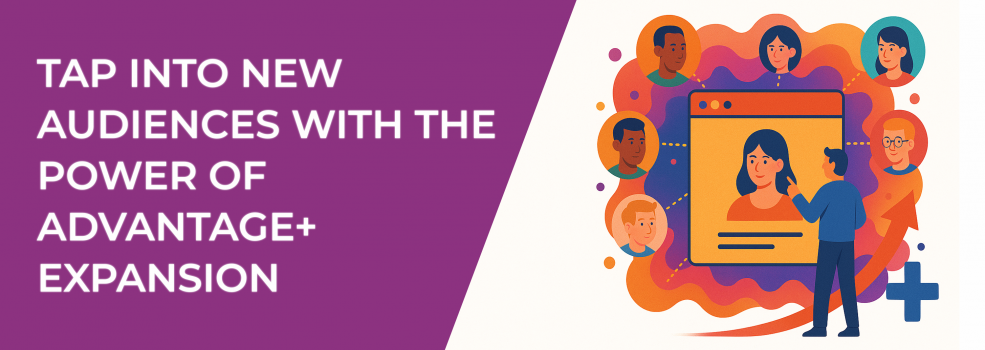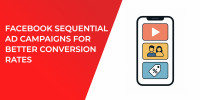Meta's latest update to audience targeting has quietly but significantly shifted the way advertisers reach potential customers on Facebook and Instagram. If you've logged into Ads Manager lately, you've probably noticed the presence of Advantage+ targeting expansion options across your ad sets. And if you’re wondering what that means for your targeting strategy, you’re not alone.
The change is subtle at first glance — just a checkbox here, a “recommended” label there. But behind the scenes, your carefully crafted audience selections may already be expanding in ways you can’t control or even see.
So, should you lean into this change or fight to keep your targeting tight? Let’s unpack how Advantage+ expansion works, what it means for your campaigns, and how to use it to your advantage (pun very much intended).
What Is Advantage+ Expansion and Why Should You Care?
In short, Advantage+ Expansion lets Meta push your ads beyond your specified interests, behaviors, and even lookalike percentages, all in the name of better performance.
It’s a system powered by AI and machine learning, designed to detect signals you might miss. Did someone recently click on a skincare ad, but they weren’t in your target list of beauty interests? Meta might show them your moisturizer promotion anyway.
Advantage+ comes in multiple flavors:
-
Advantage+ Detailed Targeting,
-
Advantage+ Lookalike,
-
Advantage+ Custom Audience,
-
And now, Advantage+ Audience — the broadest of them all.
Each is meant to help your ads reach more people who are likely to convert, even if they don’t fit your original profile. It sounds great in theory — more conversions at lower costs. But how does it really work in practice?
Let’s look closer.
Advantage+ Detailed Targeting: Broader Isn’t Always Bad
Historically, advertisers relied on detailed targeting exclusions to keep their audience tight. You could zero in on pet lovers who weren’t also cat owners, or runners who didn’t follow your competitors. But as of March 31, 2025, those exclusions are gone.
Instead, when you select interests and behaviors for your ad set, Meta may quietly push beyond them if it thinks it can improve performance. This is Advantage+ Detailed Targeting in action.
The key point here? This expansion only applies to detailed targeting. Your selections for age, gender, location, and language still act as guardrails — for now.
You can’t see exactly how much the audience is expanding. And that’s where many advertisers get stuck. How do you know if it’s helping or hurting?
Tip: if you’re running campaigns optimized for conversions, app installs, or value, Advantage+ Detailed Targeting is likely on by default — with no option to turn it off. So, test your ad copy and creatives with this in mind. If you’re appealing to a wider group, make sure your message isn’t overly niche.
Lookalike and Custom Audiences? Meta Might Still Go Broad
You may have noticed this message after selecting a lookalike: “Advantage Lookalike: Reach people beyond your lookalike audiences when it is likely to improve performance.”
Or maybe this one after uploading a custom list: “Advantage Custom Audience: Reach people beyond your custom audience when it is likely to improve performance.”
These are not just gentle suggestions. Depending on your campaign objective, these options may be locked on. That means Meta could show your ads to people outside your carefully curated audiences no matter how much time you spent building them.
You can still toggle these options off manually in some cases, but it’s easy to miss. And if you forget, you might be targeting a much broader pool than you thought.
Tip: if you’re promoting a high-ticket service or targeting past customers, be extra cautious. In these cases, specificity matters. Manually check that Advantage+ options are off (if possible), and monitor your audience overlap and CPMs for signs of audience bloat.
The Rise of Advantage+ Audience: Let the AI Choose?
Here’s where things get really interesting — and possibly a little unnerving.
Advantage+ Audience doesn’t just expand your selections. It builds the entire audience for you using signals from pixel data, ad engagement, and conversion history. You can feed it some initial interests or custom audiences as “suggestions,” but that’s all they are — suggestions.
Age, gender, even interest categories are no longer hard constraints. Meta can go far beyond them if the algorithm sees an opportunity.
Sound like handing the keys to the algorithm? That’s exactly what it is.
Tip: start small. Test Advantage+ Audience on lower-stakes campaigns first (like post engagement or video views) before you commit budget-heavy conversions. Use breakdowns (where available) to track what types of users are engaging with your ads. You may uncover unexpected segments worth exploring further.
Also, some of the most effective strategies mix human strategy with AI-driven automation — learn how to combine Advantage+ and manual targeting.
The Trade-Off: Control vs. Performance
Here’s the million-dollar question: should you embrace Advantage+ expansion or resist it?
There’s no one-size-fits-all answer. In campaigns where scale and reach matter — like brand awareness or top-of-funnel lead gen — audience expansion can be a lifesaver. It removes artificial boundaries and lets Meta’s algorithm find pockets of high-performing users.
But if your offer is hyper-targeted — say, a niche SaaS product or a regional service — you may want to stay as close to your defined audience as possible.
Unfortunately, you won’t know how far Meta expanded your audience, how much of your budget went to that expansion, or how it performed separately (unless you run some A/B tests). That’s the frustrating part. The lack of transparency means you’re forced to trust the algorithm or carefully test your way into understanding it.
If your campaigns still aren’t delivering after enabling or disabling Advantage+, it might not be the targeting — here’s how to troubleshoot Facebook ads that aren’t converting.
So, What Can You Do?
Here’s how to work smarter with Advantage+ Expansion instead of blindly trusting (or fearing) it:
-
Monitor performance closely. Look for unusual spikes or drops in CTR, cost-per-result, or quality ranking. These could hint at your ads being shown to less relevant users.
-
Test with control campaigns. Run identical ad sets — one with Advantage+ on, one with it off (where possible). Compare performance and document results.
-
Diversify your audience inputs. Feed Advantage+ with high-quality data: recent purchasers, top engagers, or high-intent site visitors. The better your seed data, the smarter the expansion.
-
Align creatives with broader appeal. If Meta is going wide, make sure your messaging isn’t too narrow. Keep headlines and visuals accessible to adjacent segments.
Ask yourself: what if the people I’ve been targeting aren’t the only ones who want what I offer? That’s the real promise of Advantage+ — it helps you find audiences you didn’t know existed.
And if you’re still catching up on the latest Meta updates — like the removal of detailed targeting exclusions — this 2025 guide to Facebook Ads targeting updates will bring you up to speed.
Final Thoughts
Advantage+ targeting features aren't going away. Whether you love them, hate them, or haven’t even noticed them, they're becoming integrated into the core of Meta’s advertising platform. That means the smart move isn’t to ignore but to learn how to harness them.
Done right, it can stretch your budget, uncover hidden audiences, and scale your results without sacrificing relevance.
But only if you stay curious, test relentlessly, and keep asking the right questions. Because in a world where algorithms make the decisions, advertisers who understand the rules and bend them with purpose will always win.

